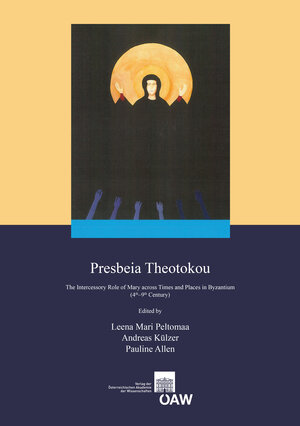
×
![Buchcover ISBN 9783700176022]()
Presbeia Theothokou
The Intercessory Role of Mary across Times and Places in Byzantium (4th-9th Century)
herausgegeben von Pauline Allen, Andreas Külzer und Leena Mari PeltomaaThe idea behind the collection of essays in this volume is to bring into focus one main aspect of the Marian cult – the invocations of Mary – across the Byzantine Empire from the fourth to the ninth century. Over the span of the five centuries with which this volume is concerned, the empire turned into a thoroughly Christian society and at the end of Iconoclasm (843) the figure of Mary is found as the intercessor of the entire empire. Why and how this development took place is a question that challenges not only the study of the Byzantine cult of Mary but the study of Byzantine society in general. This volume will be a contribution to the search for an explanation proceeding from highly variegated sources and perspectives subsumed under the title, Presbeia Theotokou. It refers to the doctrine prevailing during this transformative period, which was uninfluenced by later ideas on the significance of Mary’s part in Christ’s role as redemptor. It is agreed that regional diversity was an inherent element of the cult of Mary; the cult neither developed nor was established at the same time and in the same manner throughout the empire. The glimpses, given here, of different religious “landscapes” in Byzantine territory show first of all the cultural contexts where Mary’s intercessory role manifested itself. The selected regions – Palestine, Egypt, Constantinople, Syria, Antioch, Armenia, Durrës, Rome, Italy, and North Africa – cover a great part of the territory that was under East Roman or Byzantine rule. The contributors represent expertise in early Christian, Late-Antique and Byzantine Studies. The sources – objects, texts and documents – are examined from vantage points of archaeology, art history, papyrology, sigillography, patristics, religious studies and theology.


